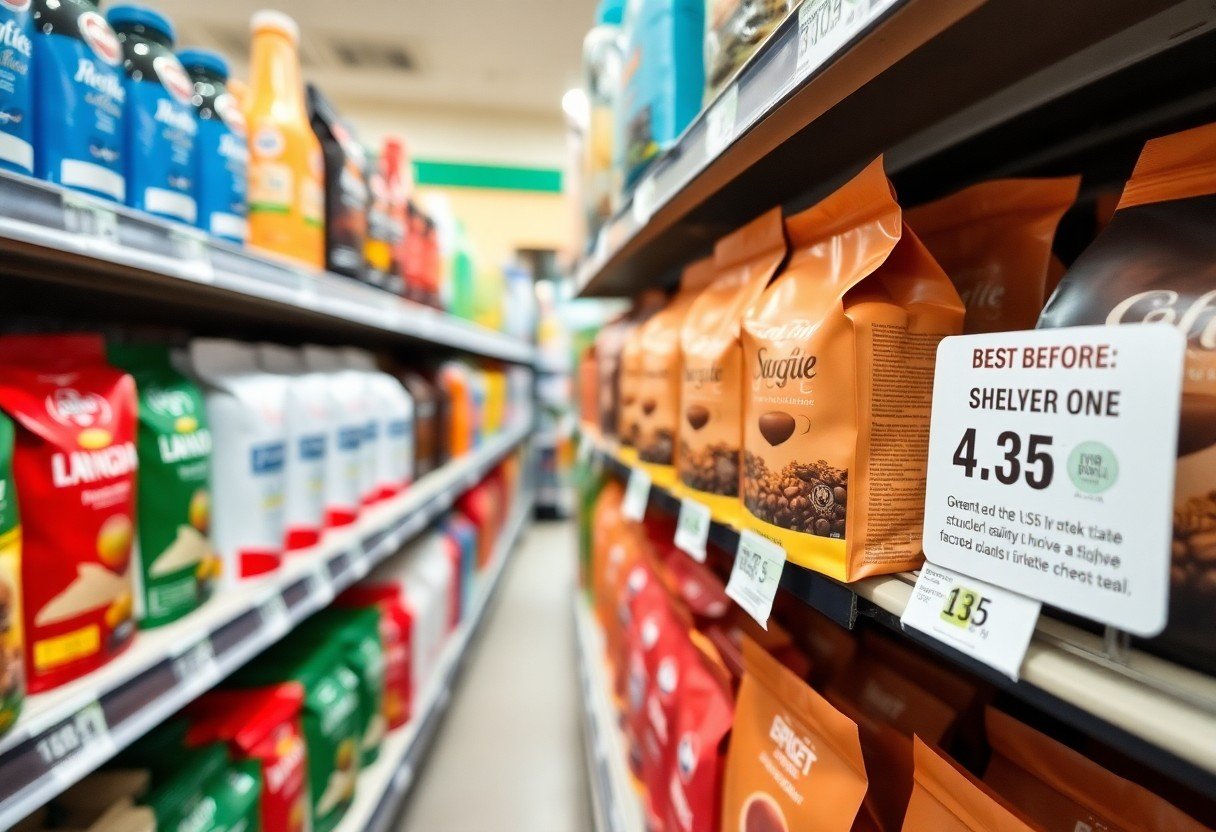Just as you cherish your daily cup of coffee, it’s important to consider the freshness of the beans you use. Understanding how long coffee beans last and how to maintain their quality is necessary for brewing the perfect cup. In this post, you’ll discover key insights into the shelf life of coffee beans, factors that impact their longevity, and tips to ensure you always enjoy a flavorful brew. Dive in to elevate your coffee experience and never settle for stale beans again.
The Lifecycle of Coffee Beans: From Harvest to Grind
Understanding the lifecycle of coffee beans helps you appreciate the depth of flavor in each cup, with every step influencing its final quality. From the lush mountains where coffee cherries grow to the moment they are ground into your morning brew, numerous factors are at play that dictate flavor, freshness, and aroma. Grasping these elements will ensure you brew the perfect cup each time, giving your coffee journey a rich foundation.
Picking and Processing: The Journey Begins
The journey starts with hand-picking ripe coffee cherries, ensuring only the best are selected for processing. Each cherry contains two beans that undergo a meticulous washing, fermenting, and drying process. This careful handling is vital to preserve the coffee’s characteristics and flavor profile, impacting your end brew directly. After processing, the beans can be hulled and sorted, marking the transition from raw fruit to a form ready for roasting.
How Roast Levels Influence Freshness
Roast levels have a significant impact on freshness and flavor, affecting how long your coffee beans will maintain their quality. Light roasts tend to preserve more of the original bean’s flavors, while dark roasts can introduce delicious caramelization but may also lead to quicker degradation due to higher oil content. Your choice of roast influences not only taste but also how to store and brew the beans for optimal freshness over time.
The roasting process drastically alters coffee beans’ chemical composition, impacting their freshness. Light roasts retain more moisture and acidity, allowing for a brighter flavor that tends to age more gracefully. Conversely, dark roasts lose moisture and develop surface oils, which can enhance flavor depth but decrease shelf life. Freshly roasted beans generally peak in flavor within two to four weeks post-roast; beyond that, both light and dark roasts may lose their vibrancy. Proper storage in an airtight container away from sunlight can help maintain optimal freshness, making the roast level an vital factor in your brewing journey.

Demystifying Expiration Dates: What ‘Best Before’ Really Means
The ‘Best Before’ date found on coffee packaging often leads to misconceptions about the actual freshness of your beans. This label indicates the period during which the coffee will maintain its optimal flavor and aroma, rather than a hard stop to its edibility. After this date, the quality might diminish, but that doesn’t mean your coffee is unsafe to drink; it simply may not deliver the vibrant taste you seek for that perfect cup.
The Role of Packaging in Preserving Quality
Understanding the Difference: Expiration vs. Freshness
Expiration refers to the point at which a product is no longer safe to consume, while freshness relates to how vibrant and flavorful your coffee remains over time. Freshly roasted beans can stay delightful for weeks, even months, if stored properly, but they may start to lose their special characteristics after a certain time. It’s normal for a bag of beans to become less aromatic with age; however, they can still be safe to drink.
Freshness is subjective and can be influenced by several factors such as roast date, storage conditions, and personal preference. For instance, freshly roasted coffee is often best enjoyed within three to four weeks to capture its peak flavor. On the other hand, an expired bag may not pose any health risks, yet the complex notes you adore could fade or become muted over time. Understanding this distinction allows for a better appreciation of your coffee experience as you seek to make informed brewing choices.
Optimal Storage Solutions: Keeping Beans at Their Best
Proper storage is imperative for ensuring your coffee beans retain their rich flavors and aromas. By paying close attention to how and where you store your beans, you can significantly prolong their freshness and ultimately enhance your brewing experience.
Temperature and Humidity: Key Players in Preservation
The ideal environment for coffee storage must maintain stable temperature and humidity levels to keep your beans fresh. Fluctuations can lead to rapid deterioration of flavor. For optimal preservation, keep your beans in a cool, dry place away from direct sunlight and heat sources.
Temperature and Humidity: Key Players in Preservation
| Factor | Ideal Conditions |
|---|---|
| Temperature | 60-70°F (15-21°C) |
| Humidity | Less than 50% |
Container Choices: Are You Storing Beans Right?
The choice of container plays a vital role in preserving the freshness of your coffee beans. Opt for airtight, dark containers made of glass or ceramic that shield light and air to prevent oxidation. Avoid using clear containers, as exposure to light can adversely impact the beans’ flavor.
Using the right container can profoundly affect your beans’ longevity and quality. Glass jars with rubber seals and ceramic canisters are excellent choices, as they not only block out light but also minimize air contact. Additionally, vacuum-sealed bags can help maintain freshness, especially for larger quantities. Regularly check for any signs of moisture or odors that could indicate storage issues—keeping your beans in an appropriate environment ultimately leads to that perfect cup of coffee you crave.
Sensory Factors: How to Evaluate Your Beans’ Freshness
To determine the freshness of your coffee beans, sensory evaluation is crucial. Pay attention to key attributes such as aroma, flavor, texture, and visual appearance. Sensory examination can help you identify the ideal beans for your preferred brew. Consider using the following evaluation methods:
- Inhale the aroma to detect any stale or off smells.
- Taste a small portion to assess the flavor profile and balance.
- Examine the texture, checking for oiliness or dryness.
- Observe the beans’ color and appearance to gauge freshness.
This multifaceted approach will empower you to select the freshest beans available.
Aroma and Flavor: The Telltale Signs
The aroma and flavor of your coffee can indicate its freshness. Freshly roasted beans will emit a strong, inviting scent, often described as rich and complex. If you detect a flat or rancid odor, this might signal the beans have lost their crucial oils and flavor compounds. Tasting is equally telling; fresh coffee should provide a vibrant and nuanced experience on your palate, while stale coffee lacks depth, often tasting bitter or sour.
Visual Cues: What to Look for in Your Coffee
Your coffee beans’ appearance plays a significant role in freshness. Look for oily surfaces as a sign of freshness; while some oils are normal, excessive oiliness can suggest rancidity. Beans should have a consistent color, ideally deep browns, and exhibit no signs of fading or dullness. Uneven sizes or broken beans may indicate poor quality or mishandling during the roasting process.
Not only should you look for oiliness and color consistency, but also check for any foreign particles or debris in the bag. High-quality coffee beans typically showcase a shimmering appearance, but the presence of excessive dust or flakes can suggest improper storage conditions. Moreover, if you notice visible cracks on the beans, it’s a sign of age and potential loss of flavor. Trust your senses—examine, smell, and taste to ensure your coffee experience is as fresh as possible.
Brewing Techniques: Adjusting for Coffee Bean Age
Your brewing method can significantly affect the taste of coffee, especially as beans age. Fresh beans yield vibrant flavors and aromas, while older beans may require adjustments to enhance their profile. You might want to tweak your brew time and temperature for optimal extraction, favoring shorter brewing times for stale beans to avoid bitterness. Experimenting with different techniques can bring out nuanced flavors, even in beans that have passed their prime.
Grind Size and Brew Time: Finding the Balance
The grind size and brew time are tightly linked variables that can either highlight or mask the coffee’s character. For freshly roasted beans, a coarser grind and longer extraction time work well, allowing the full range of flavors to emerge. In contrast, older beans might benefit from a finer grind and shorter brewing duration, which can prevent over-extraction and reduce undesirable tastes. Keeping track of these parameters during your brewing process helps you find the sweet spot for your beans.
Enhancing Flavor with Aging Beans
Aging coffee beans can surprisingly enhance certain flavor notes, particularly in specific varieties. As beans sit, they undergo a gradual transformation, mellowing harsh notes while accentuating sweeter, more complex flavors. You may find chocolate, caramel, or nutty characteristics emerge, providing a different yet delightful tasting experience. This evolution in flavor occurs naturally in some origins, such as Sumatra or Ethiopian Yirgacheffe, where aging can soften acidity and deliver a smoother cup.
It’s fascinating to observe that specific beans, particularly those grown in optimal conditions, can thrive over time instead of deteriorating. With proper storage, you can allow these beans to mature, revealing deeper notes that fresh beans might not present. Aged coffee can develop unique qualities, especially in darker roasts, where the acidity softens while deeper, richer flavors become more pronounced. For enthusiasts willing to experiment, integrating aged beans into your routine can open up a whole new world of flavor possibilities, making the most out of coffee that others might overlook.
Conclusion
With these considerations, you can effectively manage the shelf life of your coffee beans and ensure your brews maintain the highest quality. By storing beans properly and being mindful of their expiration, you can enjoy fresh flavors and aromas in every cup. Understanding the impact of time on your coffee allows you to make informed choices, ensuring that your daily ritual remains enjoyable and satisfying. Embrace these practices to elevate your coffee experience to new heights.
Q: Do coffee beans really expire or do they just lose flavor over time?
A: Coffee beans do not actually expire in the way that perishable food items do, but they do undergo changes that affect their flavor and quality. Over time, exposure to air, light, moisture, and heat can lead to the degradation of the coffee’s natural oils, resulting in a stale or flat taste. Generally, whole coffee beans maintain their best flavor for about 6 to 12 months after their roast date when stored properly in a cool, dark place. However, even after this period, they can still be used; the flavor may just not be at its peak.
Q: How should I store my coffee beans to extend their shelf life?
A: To prolong the shelf life of coffee beans, it is vital to store them in an airtight container, away from heat, light, and moisture. A cool, dark pantry is ideal. Avoid keeping coffee beans in the refrigerator or freezer, as this can introduce moisture and affect the flavor. Instead, aim to buy smaller quantities more frequently, if possible, ensuring that you have fresh coffee ready for brewing.
Q: What signs indicate that my coffee beans have gone bad?
A: While coffee beans do not spoil in the traditional sense, there are some indicators that can suggest they are past their prime. If the beans exhibit a dull, dry appearance, lack aroma, or produce an unpleasing taste when brewed, it may be time to consider replacing them. Additionally, if you notice any unusual odor, or if the beans have developed a rancid smell, this suggests that the oils have gone bad. Always trust your senses when evaluating the quality of your coffee.

